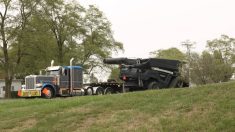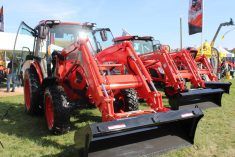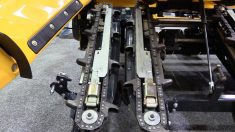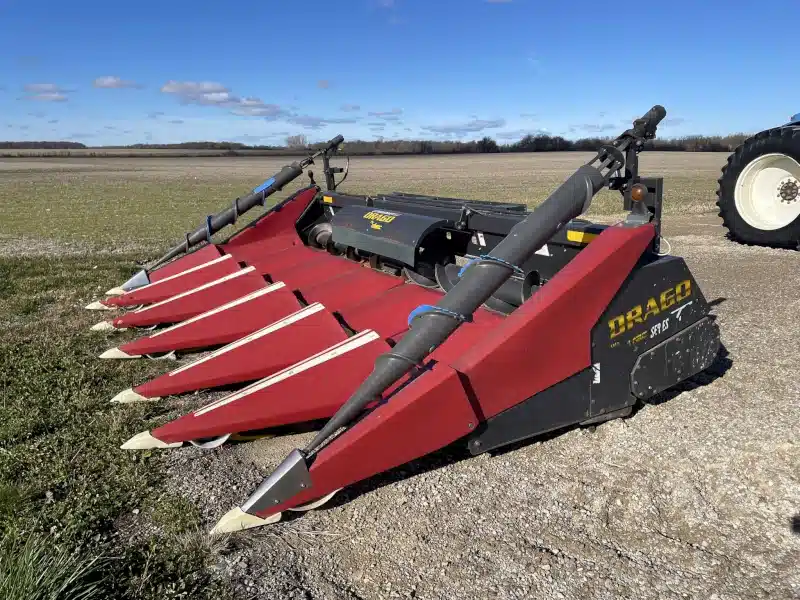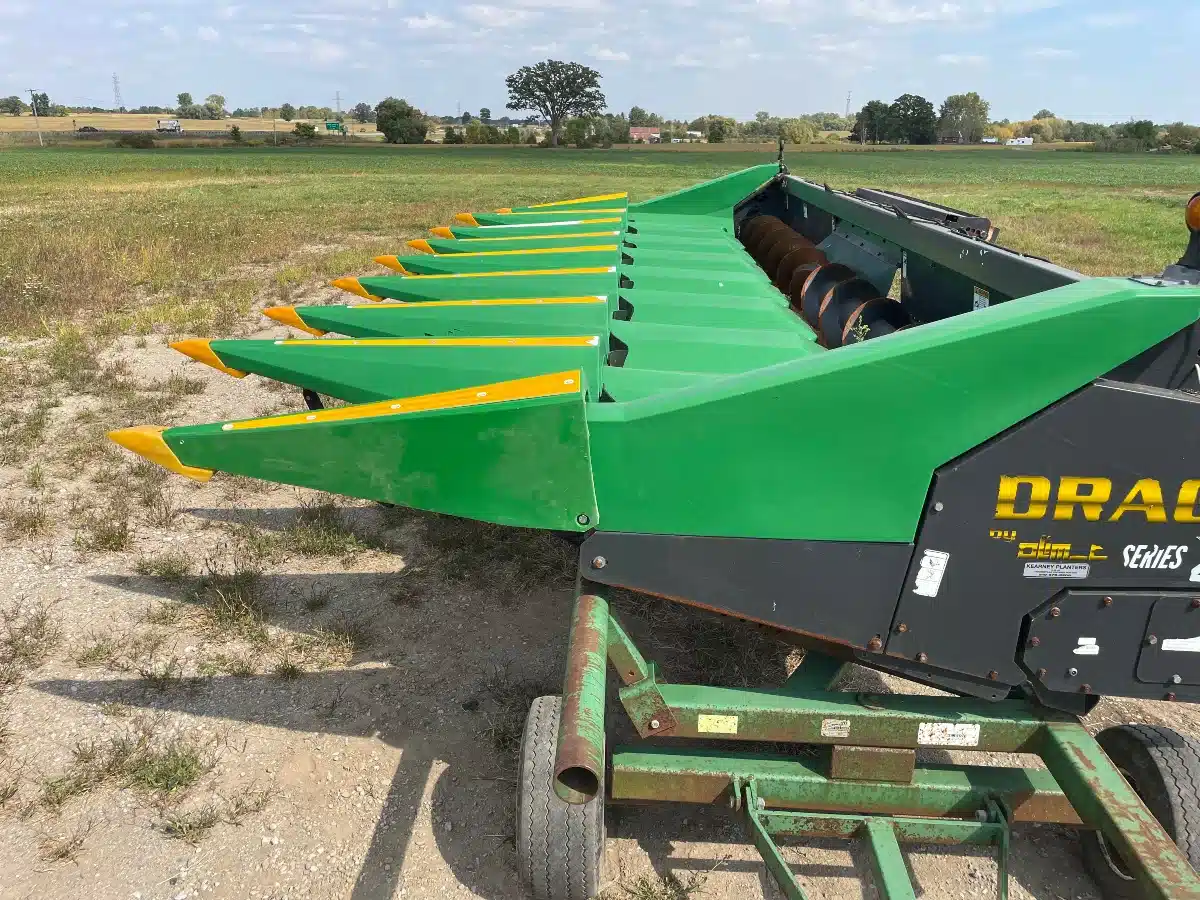As growing grain corn gradually increases in popularity in some prairie regions, more options for combine corn headers are appearing on the market. The Italian-made Drago GT header is one that many producers may not have heard of — yet.
Grainews recently reviewed some of the features of the newest Drago GT with the vice-president of Dragotec USA, Dustin Bollig. Dragotec is the North American distributor for Drago. He says his family originally imported a Drago header for use on their own farm in Iowa, and found it had a number of design advantages that significantly reduced header losses.
“We were having a lot of header loss from corn heads. What we found with Drago was we were having a lot less header loss, because the deck plates are automatically adjustable. The stalk is pushed through, opening the deck plates with no electronics and no hydraulics. It’s automatic.”
Read Also

Claas brings 1000 Series SP forage harvesters to Canada
In mid-August, Claas unveiled its new line of Jaguar forage harvesters at an event in Visalia, California, deep in the heart of that state’s dairy region.
The deck plates are spring-loaded so they are pushed apart by the stalk as it enters the header and don’t allow any gap beside them. That eliminates one possible location where shelled corn can fall through.
While most corn other headers also have adjustable deck plates, their spacing is often set by the operator, with one adjustment across the full header width. That can cause problems when the stand is variable.
“With hydraulic deck plates you only get one decision (across the header width),” he continues, “so most people just set it and forget it. University studies show if you’re off the stalk by an eight of an inch you lose up to four bushels per acre, potentially. You can’t see an eight of an inch from the cab.”
The Drago GT uses a pretty long knife roller, which also helps minimize header losses.
“The other big thing we have is the longest knife rollers in the industry.,” he says. “They’re a third longer. Longer knife rollers give us way more time so we can pull the corn down slower. There’s less ear bounce. We get that from having less tip speed with a smaller diameter. That also allows us to harvest the ear farther back in the machine.
“Most corn heads run the knife rolls so fast all the action happens right in the front. Ears bounce, they can shell and bounce right out of the head.”
To minimize bounce, the hinged deck plates sit on a pair of spring-loaded shock absorbers.
“When the ears hit the deck plates, there’s virtually no bounce,” he says. “And that saves a lot of yield.”
A large diameter front sprocket and overlapping fingers mean the Drago GT can grab downed corn easier and force it up through the knife rollers, without letting the stalk escape.
“That’s where Drago gets its name,” Bollig Says. “It’s like dragon claws trying to bring that in.”
The chopping blades are located back from the tips of the knife rollers to ensure the header has a firm grasp of the stalk before beginning to cut it. For headers with 30-inch or greater row spacings there are two chopping options, a singe or twin chop configuration. Headers below 30-inch spacing are available with only the single chop.
“With the twin chop, they cross each other and that pulverizes the plant, plus they’re split open,” he says. “So it’s better if you want to get rid of residue and work it in.”
A large diameter auger brings material across the header to the feeder house. It and all the other components are entirely gear driven. Drago headers are available from four- to-24 row widths and from 20- to 40-inch row spacings.




